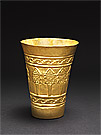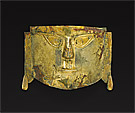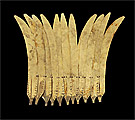Exhibition themes
Overview
The Andes mountains form a spine running down western South America, dividing desert coastal regions from the Amazon Basin. Nine thousand years ago, nomadic hunter-gatherers in Peru became farmers who domesticated plants and animals. These subjects can be seen in the art produced on the north coast as early as 2000 BC.
The many and various ancient Peruvian societies shared many beliefs, inventions and discoveries. The world consisted of three realms: the sky where the gods live, represented by birds, the earth where humans live and work, represented by felines, and the underworld where the dead dwell, represented by serpents. Liquids—water, chicha [corn liquor] and blood—were exchanged between these levels. Priests and rulers performed ceremonies and gave offerings, asking for rain and sunlight to produce food from the earth. Blood sacrifice was needed to avoid catastrophes such as earthquakes, droughts and floods.
Technological advances in stone carving, ceramics, weaving and metalwork were shaped into a dazzling aesthetic framework, seen in cultures from the Chavín (1500–200 BC) to the Inca (1400–1533 AD).
Our knowledge of their world derives from the evidence of these brilliant objects which have been excavated from tombs and sites across Peru. A wealth of remarkable art from Peru remains, despite looting due to ancient military conquests, the Spanish conquistadors and recent grave-robbers. Modern archaeologists continue to discover ancient grave sites.













